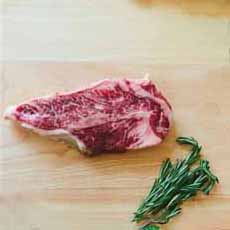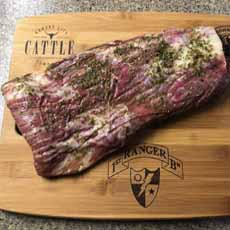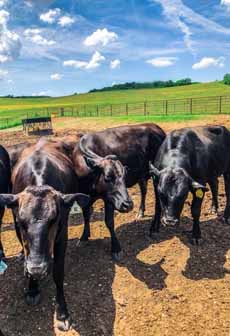What Is Wagyu Beef, Plus Wagyu Vs. Kobe Beef
|
|
For a steak lover, there is nothing so fine as wagyu beef—the kind that substitutes for Kobe in the U.S. (authentic Kobe beef, imported from Japan, is hard to come by). As trade increased between the U.S. and Japan in the 1980, both merchants and consumers discovered the extremely-marbled, extremely-tender beef that seemed to melt in the mouth (the sensation comes from the high level of unsaturated fatty acids in the beef.) The beef is a delicacy. For those with means, wagyu beef is served as steak, sashimi, shabu-shabu, sukiyaki and teppanyaki. In the 1970s, with increased American visits to Japan for trade and tourism, very American visitor who tasted the beef wanted it It wasn’t long before they arranged to get their own supply. Some presumably very well-to-do Americans arranged to airlift top Wagyu breeding cattle to the U.S.—in custom-outfitted 737s! Only the Tajima breed of Wagyu cattle. There are other qualifications as well, such as marbling and age—similar to the USDA beef grading system. This evoked concerns in the Japanese government, which declared Wagyu a national treasure and banned the export of any cattle, embryos or other genetics. But it was too late, the “cow” had left the barn and was being bred in the U.S. [source]. From the 1980s through 2011, then, no Kobe beef was exported. Finally, due to the revenue potential and revisiting of the ban, The first exports left the island in 2012 to Macau and Hong Kong; and subsequently to Canada, Singapore, Thailand, the U.K. and the U.S. Trade agreements notwithstanding, only a few hundred pounds of authentic Kobe beef is imported into the U.S. every year. It is in limited supply, even in Japan. In the U.S., it is typically sold as a specialty item in the best steakhouses, for hundreds of dollars an ounce. Thus, when you see “Kobe” on a menu in the U.S., it should be clarified as “Kobe-style,” i.e., Wagyu. The literal meaning of Wagyu, and Americans’ understanding of Wagyu beef, are related but not the same. Wagyu, loosely translated, means “Japanese cattle”: wa- means Japanese or Japanese-style, and “-gyu” means cow or cattle. So “Wagyu” can mean any cattle that is bred in Japan (or the Japanese style). In Japan, the best beef comes from black female cows that have not yet been bred. The areas agreed to produce the best beef are: There is az story is that the flavor and texture are so superior because the cows are feed beer and massaged daily. This may have been true for one herd at one time; but with tens and thousands of beef on the hoof, it would now be impractical. (But it does name a great story.) It is genetics, diet, environment and similar factors that make the “three big beefs” more tasty and tender. Wagyu cattle in the U.S. are either “100% fullblood,” meaning they are direct descendants of the original imported Wagyu cattle, without any crossbreeding, or “purebred,” in which a few other breeds were crossbred in their lineage sometime in the past. Per the USDA, only these two options can be called Wagyu [source]. How good is Wagyu? In terms of marbling/grading, only about 5% of normal U.S. beef production from cattle such as Black Angus is graded as Prime, while 90% of Wagyu beef grades as Prime. For a steak-lovers tasting, how about a side-by-side comparison of Wagyu and Black Angus? Authentic Kobe beef is that which has been imported from Japan. “Kobe-style” beef is bred in the U.S. from the same breed of black cattle: Wagyu. From the first Wagyu cattle imported in the 1970s, 150 US ranches now raise tens of thousands of Wagyu cattle [source]. Many breeders have crossed Wagyu cattle with Black Angus, to achieve a flavor profile more copacetic with Americans’ beef palate. Farms in the U.S. and U.K. attempt to replicate the Kobe cattle-raising traditions. For example, in Japan the cattle are confined in small pens and given much more energy-dense feed. |
|
|
There are more than a few places to by Wagyu in the U.S. One we’ve singled out is KC Cattle Company, founded by a Patrick Montgomery, a former member of 1st Ranger Battalion of the United States Army. Part of the profits are contributed to the Sua Sponte Foundation, a 501(3)(c) non-profit organization that steps in when a Ranger is injured or killed, covering expenses and support that the military doesn’t cover. Just about any cut you like is available: brisket, denver, flat iron, hangar, rib-eye, roasts, short ribs, sirloin, skirt, stew meat, strip, tenderloin, even soup bones. For more casual dining, there are ground beef, hot dogs and sausage. For gifting, there are different gift basket assortments.
|
||





